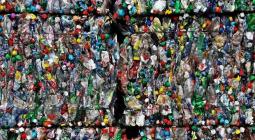Plastic packaging circularity – an opportunity not to be wasted

Working together, legislation and industry can transform the plastics packaging value chain – making significant steps in recyclability and use of recycled content. Separate collection of packaging waste, product design, infrastructure and a strong internal market will be key.
Graham Houlder, the Circular Economy for Flexible Packaging (CEFLEX) initiative.
How can we accelerate the circularity of plastic packaging? It’s a several billion-euro question requiring both public and private investment with wide-reaching implications. The good news is that we have many of the answers – and industry is already applying them and investing to shift the EU plastics system towards circularity and climate neutrality.
CEFLEX is a co-signatory of a recent position supported by several European organisations across the plastics packaging value chain. Together, we set out how the Packaging and Packaging Waste Regulation (PPWR) proposal could serve as a major catalyst for this change.[1]
For example, ambitious but achievable 2030 average recycled content targets for all plastic packaging to trigger investments in new sorting and recycling capacities, both mechanical and chemical. Or a binding regime for harmonised design-for-recycling criteria by 2030 to ensure that all packaging placed on the EU market.
This push on circular design is welcome and further accelerates the extensive collaboration and investment across the value chain in recent years – which has brought innovative changes in plastic packaging design, ensuring that it is compatible with established and state-of-the-art separate collection, quality sorting, reuse and recycling infrastructure operating at an industrial scale.
Design for recycling and materials used again and again in the circular economy
By committing to all packaging to be recycled at an industrial scale from 2035, the PPWR will also help to accelerate development of separate collection, sorting and recycling infrastructure, particularly for plastics.
This legislative push is appreciated by an industry value chain which is making the necessary changes to packaging design and sizable investments in the technology, processes and know-how to scale up and reach significant volumes of plastics packaging waste treated and recycled plastics placed on the market.
Key pieces of the puzzle will be Member State support for separate collection of all packaging, including from households, offices and in public spaces and a positive material- and technology-neutral investment climate. The latter can be achieved through legislation which incentivizes and steers while avoiding arbitrary and discriminatory restrictions.
Brought together with the power of the EU’s internal market, the new PPWR coupled with other relevant legislation has the potential to create economies of scale and a coordinated drive towards circularity. Facilitating the movement of used packaging to sorting and recycling plants and harmonised design for recycling provides consistent quality and a reliable supply of feedstock for recyclers, building a stable business case for the circular economy. This is key to drastically reducing the amounts of plastic packaging waste going to incineration or landfill.
As we make the change from linear to circular, a coordinated and forward-looking approach is also needed. Consideration for a stream of non-food grade recycled content that may not find packaging end markets can make room for targets in other product legislation, driving closed material loops where this makes sense. Clear safety nets will help support the transformation to circularity, while safeguarding against the risk of disruption to supplies of packaging for essential products like food and medicines during a transition period.
Steps towards reuse
Thanks to their versatility and durability, plastics provide potential for supporting many loops of reuse and refill before reaching their recyclable end of life. The PPWR offers a chance to take measured steps that incentivize the best use and overall environmental outcomes for different plastic packaging formats, either via reuse, or recycling, or both.
A major step forward for Europe
Packaging circularity is a vital step for the plastics value chain to lower its greenhouse gas emissions. As the recent study ‘Reshaping Plastics’ identified, plastics circularity levers are “the fastest, most affordable, most effective, and most reliable method of reducing GHGs and waste disposal in the system available to stakeholders today”.
The plastics value chain is already taking major strides and materials which are fully recyclable and recycled have a clear role to play in a circular economy and delivering on the EU Green Deal’s targets.
Supporting measures to meet the ambitions of the Packaging and Packaging Waste Regulation proposal will help seize the opportunity and make our waste circular.
[1] Plastics packaging value chain views on the proposal for a Packaging & Packaging Waste Regulation signatories: CEFLEX, European Manufacturers of EPS (EUMEPS), European Plastic Convertors (EuPC), Flexible Packaging Europe, Polyolefin Circular Economy Platform (PCEP), Plastics Europe, Styrenics Circular Solutions (SCS) and Vinyl Plus






